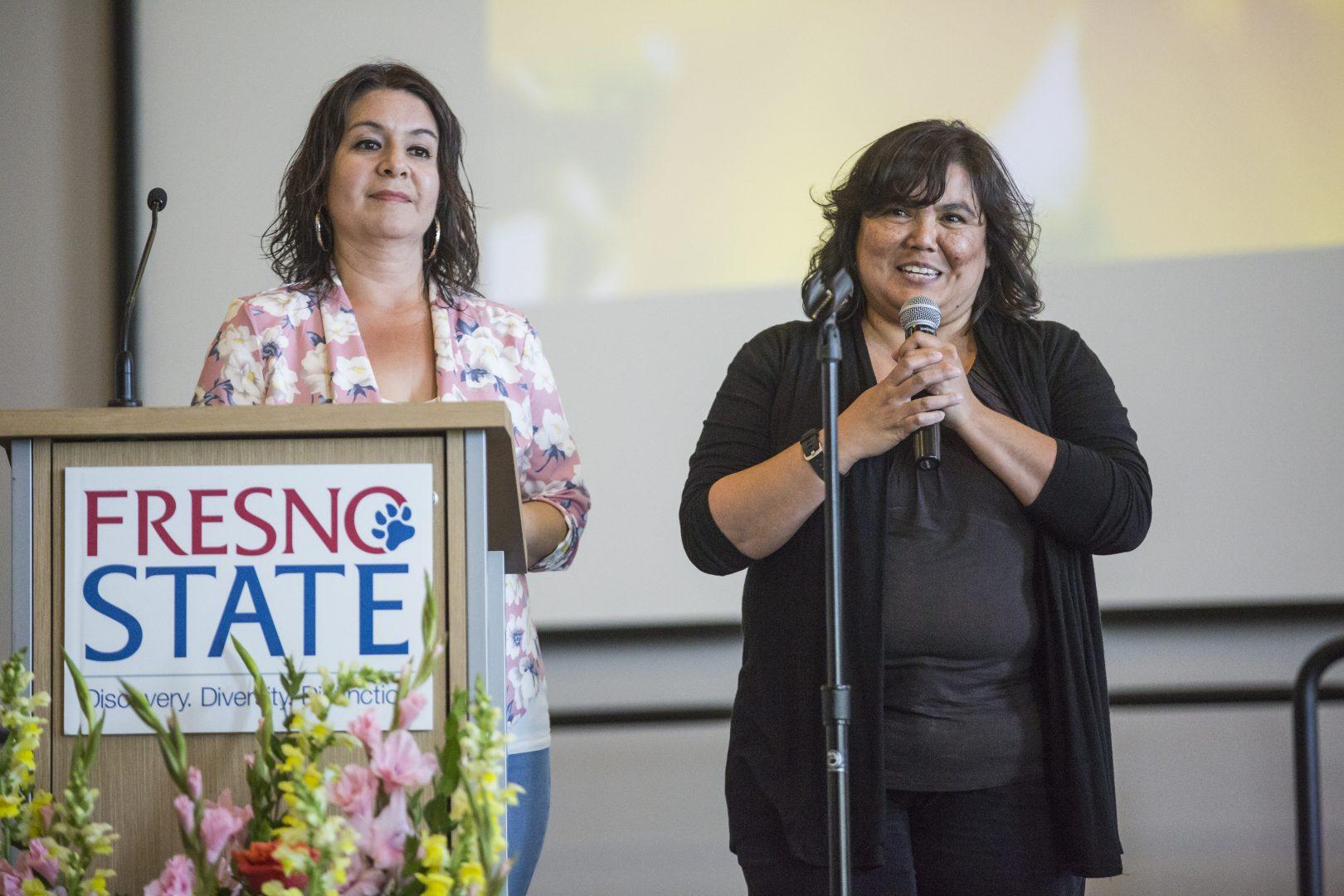Deaf Education’s 200th anniversary was celebrated on April 28 by more than 400 people dedicated to the educational experience of learning what deafness is and how communication barriers can be broken down.
“Our 200th Anniversary of Deaf Education event will be the largest event on the West coast,” Dr. Janice Smith-Warshaw, director of the deaf education programs, said in a news release.
Since 1817, when the first American School for the Deaf opened in Hartford, Connecticut, 200 years have passed and the intersectionality of deaf education has grown.
A two-hour lecture on “The Silent Garden” shed light on the many facets of growing up deaf, communities that are affected by deafness and how to aid them.
Dr. Paul Ogden, professor emeritus of deaf studies and author of “The Silent Garden: Raising Your Deaf Child,” said through his translator, “I wrote a book in 1982, a reference book for parents of deaf children, and I gave a copy to my mother — it was my first book ever, and I was a kid back then.”
Ogden said his mother, who raised two sons who are deaf, “burst into tears” when she received the book.
“She said ‘I felt alone in that. There was nothing out there for me,’” Ogden said. Thirty-five years later, in 2016, the third edition of the book was published — with more research and information.
“I thought to myself, the garden is a place where we all value each other. You’re very special to us and we value how much you care about communication [and] how you partner with the deaf community,” Ogden said.
Ogden announced that this fall, Gallaudet University, the only university in the world that was specifically established for deaf and hard-of-hearing students, will publish a Spanish version of his book — helping to inform and break down communication barriers for Spanish speakers.
Laura Lee Hasso, a deaf and hard-of-hearing teacher, said she was inspired to pursue a deaf education credential upon realizing a large percentage of the deaf population was lacking educators.
Lee Hasso said that within the last three to five years, from kindergarten to the age of 22, the deaf student population has ranged from 14,000 to 16,000 students in California.
“Whether those students are going to regional deaf education programs, residential schools, or are receiving mainstream classes or oral schools for the deaf — there are at least 15,000 students right now,” Lee Hasso said. “In that population, it ranges from 50 to 65 percent Latino population.”
Lee Hasso said that according to the California Department of Education, there is no data available about deaf education teachers, but what is known, Lee Hasso said, 60 to 65 percent of all educators in the state are white, hearing women.
She added, “Why we are here to today is to talk about that connection — or disconnect.”
The language, Lee Hasso said, is not the only thing that affects the deaf Latino community. Cultural barriers come with the oral aspect of language that the deaf community must learn in different ways.
Irma Sanchez, founder of Deaf Latinos y Familias and a mother of three sons who are deaf, said when she found herself as a Latina mom raising sons who are deaf, she initially had no idea what it entailed.
“I had no support whatsoever from my family, [or] my husband’s family,” Sanchez said. “I had no idea what the culture [was] or what [American Sign Language] was.”
Sanchez persevered. She learned the culture and the language, giving all credit to Ogden’s book.
“That book, it was like my lifesaver, my life boat. Everywhere I went, I would carry that book with me,” she said
Sanchez’s favorite quote from the book: “For you, everything has changed — for your deaf child, nothing has.”
Ogden said the silent garden doesn’t need to be a quiet place. He said it is a place where “we can all enter and have complete communication accessibility.”




